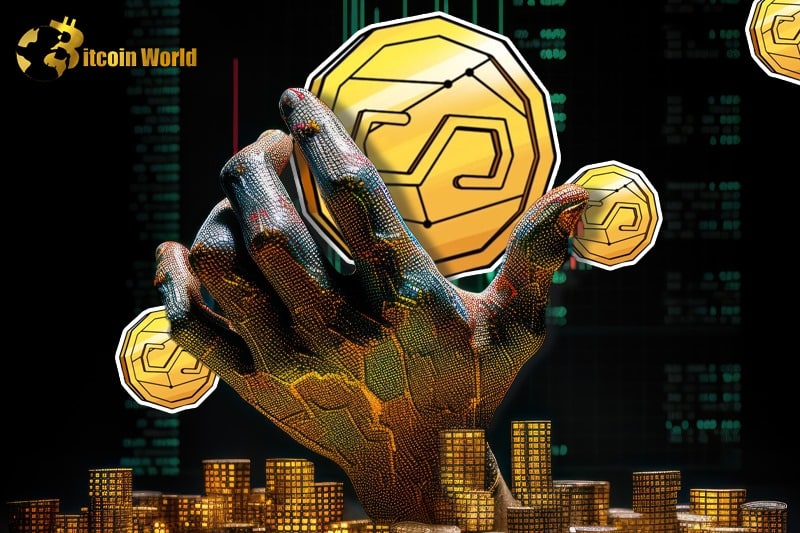Could decentralized stablecoins be the future of crypto? Rune Christensen, the co-founder of DeFi powerhouse MakerDAO, certainly believes so. Speaking at Token 2049 in Singapore, Christensen shared his vision for decentralized stablecoins like Dai (DAI) and their potential to reshape the entire stablecoin landscape. Let’s dive into why this DeFi veteran is so bullish on the decentralized approach and what it means for the future of digital finance.
Why Decentralized Stablecoins Could Take Center Stage
Christensen’s optimistic outlook stems from a belief in crypto’s long-term potential. He suggests that if the crypto space truly matures and fulfills its promise, decentralized stablecoins are poised to become the dominant force. In a conversation with Cointelegraph’s Andrew Fenton, he elaborated on this, referencing a presentation by Nic Carter of Castle Island Ventures. Carter highlighted the rise of interest-bearing stablecoins, predicting they could capture a significant 30% of the market within just two years. Christensen concurred, adding a caveat:
“If high inflation high rates continue, then probably,” stablecoin dominance will increase.

But the real game-changer, according to Christensen, isn’t just the growth of stablecoins, but the shift towards decentralization. When asked directly if decentralized stablecoins could truly compete with their centralized counterparts, his response was unequivocal:
“Easily I mean, I think if the space ends up living up to its potential, then decentralized stablecoins will be the entire market like centralized stablecoins would be the edges that connect us to like the legacy system.”
Essentially, Christensen envisions centralized stablecoins as bridges to the traditional financial system, while decentralized options will form the backbone of the native crypto economy if the industry achieves its full potential. He acknowledges that increased regulation and mainstream adoption could boost centralized stablecoins, but he emphasizes the unique strengths of decentralized alternatives.
The “Killer Advantage”: Gamifying Savings with Decentralized Stablecoins
What exactly gives decentralized stablecoins the edge? Christensen points to a key differentiator:
“I think the real killer advantage of decentralized stablecoins, run by actual data like Maker, is this ability to gamify your savings.”
This “gamification” aspect is intriguing. Imagine a savings system that’s not just secure and stable but also engaging and rewarding in a way that traditional finance often isn’t. This could be a powerful draw, especially for a new generation of users accustomed to interactive and game-like experiences.
To understand MakerDAO’s vision for the future and how it ties into this decentralized stablecoin dominance, it’s crucial to look at their ambitious “Endgame Plan”.
MakerDAO’s “Endgame Plan”: Charting a Course for Decentralized Dominance
Unveiled in mid-2022 by Christensen himself, MakerDAO’s “Endgame Plan” is a strategic roadmap designed to position DAI for long-term success in a decentralized future. A core component of this plan is transitioning DAI into a free-floating asset, initially backed by real-world assets (RWAs). Here’s a breakdown of the key phases:
- Three-Year Transition: DAI will maintain its dollar peg for the next three years.
- RWA Focus: During this period, MakerDAO will aggressively expand its portfolio of Real World Assets as collateral.
- ETH Accumulation: Simultaneously, the protocol aims to maximize its Ether (ETH) reserves to bolster decentralized collateralization.
The ultimate goal is to create a robust and decentralized foundation for DAI, reducing reliance on centralized assets and enhancing its resilience. This strategic shift is visualized in MakerDAO’s own diagram:

Christensen believes that MakerDAO has already established a strong and stable base for DAI. However, he also acknowledges the rise of less reputable projects in the crypto space, implying a need for projects with solid foundations to stand out and lead the way.
Making DeFi Fun: Gamification to Attract a New Generation
Going back to the idea of “gamifying savings,” Christensen emphasizes the importance of making DeFi protocols more user-friendly and appealing, particularly to younger demographics. He believes that user experience is paramount:
“It’s what people want,” he said before adding, “Things are designed like a game, and that’s the kind of interface they will use.”
This suggests a move towards more interactive, engaging interfaces for DeFi platforms, moving beyond complex technical jargon and focusing on intuitive design. Imagine managing your decentralized stablecoin holdings within an interface that feels more like a game than a traditional financial application. This could significantly lower the barrier to entry and attract a wider audience to the benefits of decentralized finance.

The Takeaway: Decentralization as the Future of Stablecoins?
Rune Christensen’s vision paints a compelling picture of a future where decentralized stablecoins are not just a niche within crypto, but the dominant form. His arguments hinge on the belief that as crypto matures and delivers on its promises, the inherent advantages of decentralization – security, transparency, and potentially, gamified user experiences – will become increasingly attractive. While centralized stablecoins will likely continue to play a crucial role as on-ramps to the traditional financial system, the real innovation and long-term potential, according to Christensen, lies in the decentralized realm. Whether this prediction fully materializes remains to be seen, but the insights from a DeFi pioneer like Christensen offer valuable food for thought as we navigate the evolving landscape of stablecoins and the broader crypto ecosystem.
Disclaimer: The information provided is not trading advice, Bitcoinworld.co.in holds no liability for any investments made based on the information provided on this page. We strongly recommend independent research and/or consultation with a qualified professional before making any investment decisions.



